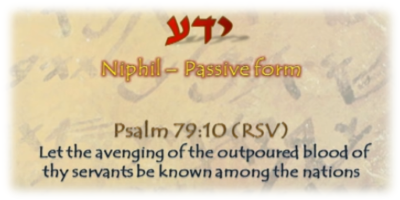The below image is from the TV show "History Happened Here: The Dead Sea Scrolls," narrated by Leonard Nimoy. The editor of this segment recognized "lines" within the text and oriented the image to reflect this. The mistake the editor made was that he assumed our cultural perspective into the image.
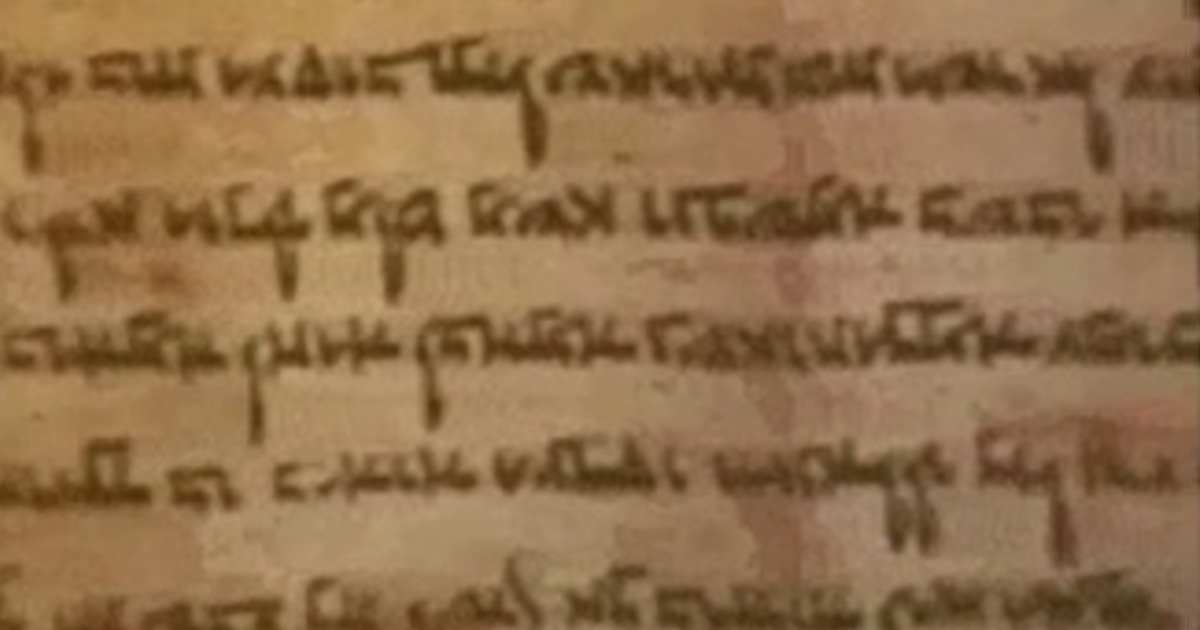
The image as it appeared in the TV series History Happened Here
In our culture, we write words on top of a line, but Hebrew was written with the words hanging down from the line. The image above, as it appeared in the episode, is upside down. The image below reveals its correct orientation.
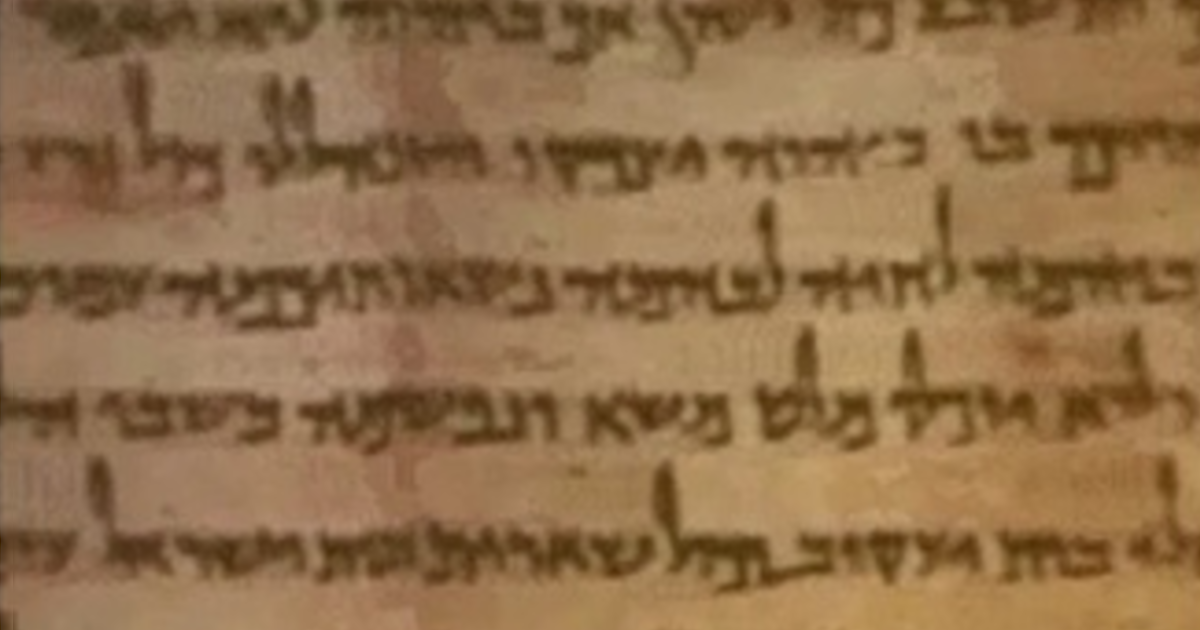
Correct orientation of the image
When we make an assumption about an ancient text based on our own culture, we will misinterpret and mistranslate the text.
In his book Understanding the whole student, Benjamin Lee Whorf stated, in what has become known as the Whorf hypothesis, that; "language is not simply a way of voicing ideas, but is the very thing which shapes those ideas." An example of this is how one perceives of time. In our modern western culture, we view time in the sense of the past, present and future, a fixed and measurable progression of time.
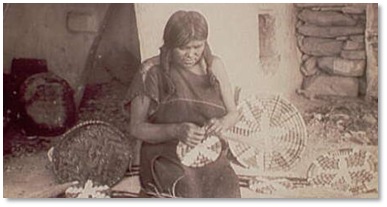
A Hopi Indian, c. 1910
Other cultures, such as the Hopi Indians of North America, do not share this same perspective of time. To the Hopis, there is what "is" (manifested) and what "is not yet" (unmanifested). Interestingly, the Ancient Hebrews had a similar view of time. Like the Hopi language, the Ancient Hebrew language does not use past, present and future tenses for verbs. Instead, they use two tenses:
- Manifested - A completed action
- Unmanifested - An incomplete action
An individual, whose native language is Hopi, views time from the Hopi perspective, but if he is required to adopt English, he learns the English perspective of time. During the late 1800s, the United States forced the Native Americans to adopt the English language and when a Hopi no longer functions within his native language, the original cultural perspectives, such as time, is lost and replaced with the modern western perspective of time. This same shift in perspectives can be seen throughout the Ancient Hebrew vocabulary.
Interpreting the Bible through the Hebrew Culture
A language is always closely connected to the culture of the people using that language. This is not only true for different languages, but for different cultures using the same language. We can never assume people from one culture will always understand a people from another culture in the same way.

The results of rain
- Rain
- Agricultural: blessing or life-giving resource
- Urban: inconvenience or nuisance
- Biscuit
- American English: soft, raised bread
- British English: hard, flat cake (cookie/cracker)
- Coffee
- American: large, mild
- European: small, potent

This is not only true for the many cultures of today, but even more so when we are translating ideas and concepts from an ancient culture to a modern one. We know today that a star is a giant ball of gas burning at millions of degrees, billions of miles away, but ancient man did not have this understanding and we cannot use our modern definition of a star for an ancient people understanding of what a star is.
[He] stretches out the heavens like a curtain, and spreads them like a tent to dwell in. (Isaiah 40:22)
The above passage from Isaiah is making an analogy between the heavens and a tent. In order to properly understand this analogy, one must understand the unique quality of the tents of the Ancient Hebrews.
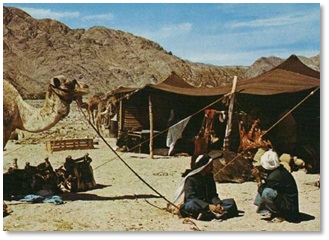
A goat hair tent of the Bedouin, modern day nomads of the Near East
These tents were generally made from woven black goat hair. When sitting inside the tent, it is very dark, but pin holes of light can be seen coming through the fibers and appear like the stars of the night sky. When it rains, the hair fibers swell and seal the tent and the pin holes of light disappear, just as they do when the clouds come, blocking the view of the stars. When an Ancient Hebrew looks up at the night sky he sees God's tent over him, in the same way as his own tent covers over and protects his family.

tsiytsiyt
In Numbers 15:38 we read; Speak to the sons of Israel and say to them, make tsiytsiyt on the corners of your garment. The Hebrew word ציצית (tsiytsiyt) is a noun derived from the word ציץ (tsiyts).

A Blossom
A ציץ (tsiyts) is the "blossom" of a tree, which in time will become a fruit. The tsiytsiyt then is a blossom, not in appearance, but in function. The function of the tsiytsiyt is to be a reminder to the wearer to produce fruit, fruit being the observance of the commands, as stated in verse 39, "remember the commandments," the teachings of God, which according to Psalm 1:2,3, is like producing fruit.
Therefore, the word tsiytsiyt carries with it a cultural perspective which connects the blossoms of a tree with the performance of a commandment.
This "concrete" Hebrew language continued to function as the Jewish people's native language until their removal from the land after the Bar Kockba revolt in 135 AD, at which time they were dispersed into many different nations. While the Jewish people continued to use the Hebrew language from then until now, it was relegated to their religious lives alone. The language of the people around them, quite often this was Greek or Aramaic, was adopted as the language for everyday use. At this point, the new adopted language becomes the influential language in their life and their perspectives of words and ideas are now determined by this dominant language.
The Hebrew word tsiytsiyt is now translated into their new language. In the case of the Greek language, it is translated into κρασπεδον (kraspedon), meaning "a decorative fringe or thread." No longer is the tsiytsiyt attached to the idea of a "blossom," but instead simply as a "fringe." This same shift in perception occurred each time a new language was adopted, whether it was Spanish, German or English.
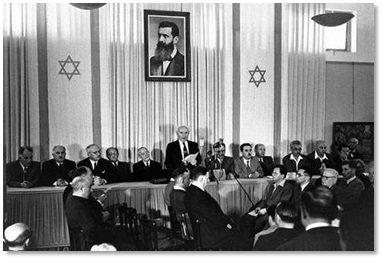
Declaration of the State of Israel in 1948
In 1948 Israel became a Jewish state and with that, Hebrew once again became the everyday language of the Jewish people. While the language had been resurrected, the original cultural perspective of Ancient Hebrew had disappeared long ago and the Western influence survived. Therefore, a tsiytsiyt, in the mind of modern Orthodox Jews, is still a decorative fringe and no longer functionally related to a blossom.
This same change can be seen throughout the Hebrew language.
- תורה (torah)
- Ancient: Journey
- Modern: Doctrine
- כוהן (kohen)
- Ancient: Base of community (inspector, counselor, etc.)
- Modern: Religious priest
- קדוש (qadosh)
- Ancient: Special
- Modern: Holy
The Agricultural aspect of the Hebrew Language
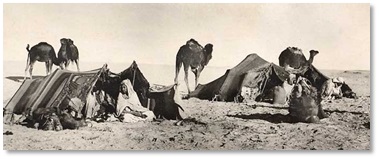
A Bedouin Camp
The Ancient Hebrews were nomadic agriculturalists who migrated from pasture to pasture, watering hole to watering hole. Their entire lives were spent in the wilderness and this lifestyle had a significant effect on their language.
Some Hebrew words are obviously related to this agricultural lifestyle.
- אוהל (ohel) - tent
- רועה (ro'eh) - shepherd
- קציר (qatsir) - harvest
Besides these obvious agricultural words, many other words, which we would not relate to agriculture, are in fact rooted in some aspect of the Nomadic culture.
- חן (hhen) - grace; originally "oasis"
- מחנה (mahhaneh) - camp (pitched at an oasis)
Other Biblical words, which have lost their original agricultural meanings include;
- מצוה (mitzvah) - “command,” literally “directions for the journey”
- צדיק (tsadiyq) - “righteous,” literally “traveling the path”
- רשע (rasha) - “wicked,” literally “lost from the path”

Like what you’re discovering? Continue the journey from Bible reader to translator.
|





